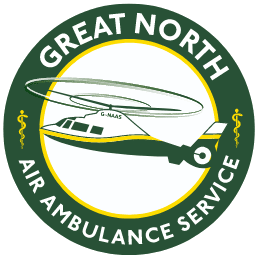A schoolgirl allowed air ambulance paramedics to remotely access her smartphone camera in order to survey the aftermath of a bus collision.
14-year-old Karla Fish has been praised for the cool-headed way she responded after a boy was injured by a bus.
The incident happened in Consett on Tuesday July 16. After alerting the North East Ambulance Service to the incident, Karla was contacted by the Great North Air Ambulance Service (GNAAS) to see if their crew could use her phone camera.
The charity uses the GoodSAM service, which works by sending a text message to the bystander. After clicking the link, the crew back at base can watch through the phone’s camera, gleaning more details about the incident as they decide if the incident needs air support.
In this case, the boy had sustained a leg injury that while nasty, did not require the services of GNAAS. This allowed the aircraft and team to be made available for other, potentially more serious, incidents ongoing throughout the region.
Speaking to The Northern Echo, Karla said: “I used my phone to create a live stream to show the paramedics what was happening. It was like a video they could see. They sent me a link that I had to click on so they could access my camera so they could see exactly what I could see. It was like an open wound and it was bleeding a lot. He was screaming a lot. He was in a lot of pain.”
The boy was cared for North East Ambulance Service.
Another recent incident allowed the GNAAS doctor and paramedic team to spot a previously unseen and seriously injured patient in the aftermath of a car crash near Hexham. On that occasion, the aircraft responded instantly rather than waiting for more information to come through from the scene, saving valuable time.
The software is being used by GNAAS medical professionals around five times a week and is showing to have positive results.
GNAAS paramedic, Tim West said: “The system is beneficial to us as a charity as it gives us more information to allow us to make a decision to deploy the aircraft.
“Asking over the phone is one thing, seeing what is going on, on scene, with your own eyes, gives us a greater awareness of injuries.
“This can assist the critical care team in targeting critical care resources to those that need it the most.”
GoodSAM’s medical director, Professor Mark Wilson, said: “Being able to see the patient and the scene without them having to download a video chat app, and getting a reading of their vital signs, dramatically improves remote assessment of illness.
“This can be through visualising the mechanisms of injury, for instance the number of vehicles involved or how sick a patient appears. This information can radically improve resource management – prioritising patients who otherwise might not have been thought of as that urgent.”
To find out more about how GNAAS is called out, please click here.
For Karla’s story, please visit The Northern Echo.
Summary
GoodSAM (Smartphone Activated Medics) is a system which gives medics the ability to see patients by simply sending a text message to a 999 caller’s phone.
The use of this system enables our critical care team to gather as much information as they need about the severity of the incident prior to launching the aircraft.
Our doctor and paramedic team can then make a better-informed conclusion on the extent of the incident.
By simply sending a text message to the caller, our medics gain access to a live look at the nature and extent of injuries sustained by a patient through their smartphone camera.



